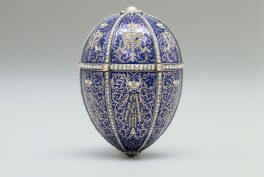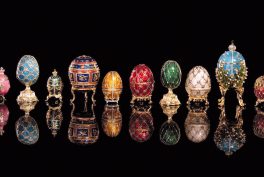The Fabergé jewelry workshop is most renowned for its famous Easter Eggs. They are a symbol of the ultimate luxury, but also of an era long gone and irretrievably lost. Emperor Alexander III ordered the first Fabergé egg for his wife Maria Feodorovna in 1885. It was a touching gift; a luxurious object, with a surprise hidden inside, that had no other purpose than to bring delight. Funny and charming at the same time, these eggs allowed for the jeweler an opportunity to show off his craft.
The workshop employed two women designers. At the time it may have seemed surprising and had nothing to do with the fight for equality, Fabergé was just a smart businessman who knew he needed the best designers there were, and gender didn’t matter to him, as long as the objects produced by the workshop were the most exquisite ones.
Alma Pihl, the titular Fabergé Girl in Ina Christova’s book, was the granddaughter of the workshop’s lead designer August Holmström. Her uncle Albert Holmström and aunt Hilma Alina Holmström also worked for Fabergé. In 1909 Alma joined the workshop as a draughtswoman and her drawings quickly caught Fabergé’s eye. She trained as a jewelry designer, which gave her a good understanding of the techniques available and their limitations. What Alma brought to the table was creativity and imagination unrestricted by long formal training, which pushed the company’s designs into new realms.
In her book, Christova focuses not only on Alma’s designs, she also attempts to paint us a panorama of Saint Petersburg in the early 20th century. We get to see the life of middle-class designers, the luxurious life of the people who buy their designs, and the extreme poverty that pushed people into desperation. While some of Alma’s emotional concerns may not be fully convincing, the broad landscape of the city and the change that happened as the October Revolution was brewing is fascinating. The radical break and destruction of the existing order that the revolution brought make us realize that the fragility of the Winter Easter Egg designed by Alma was closer to reality than we may wish for.
Ina will be speaking about The Faberge Girl at Blackwells Oxford, UK, on 24th June.











